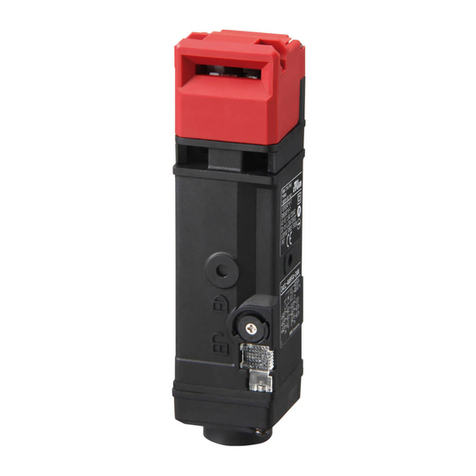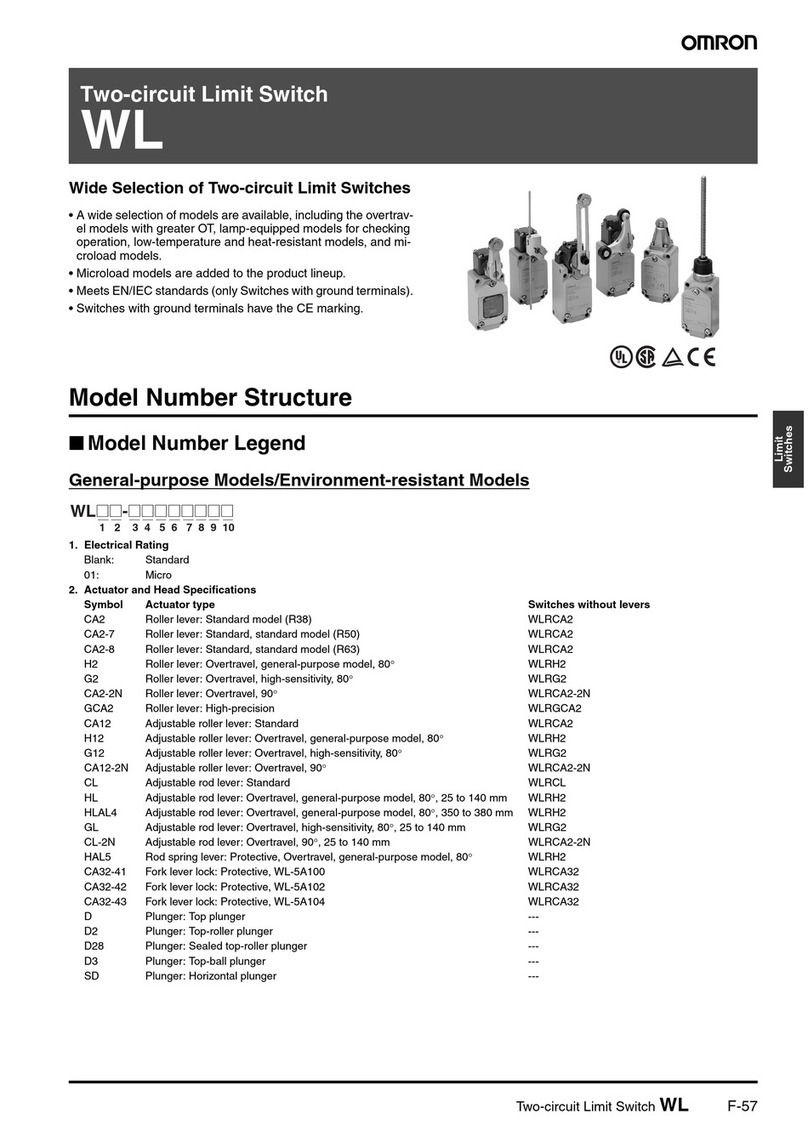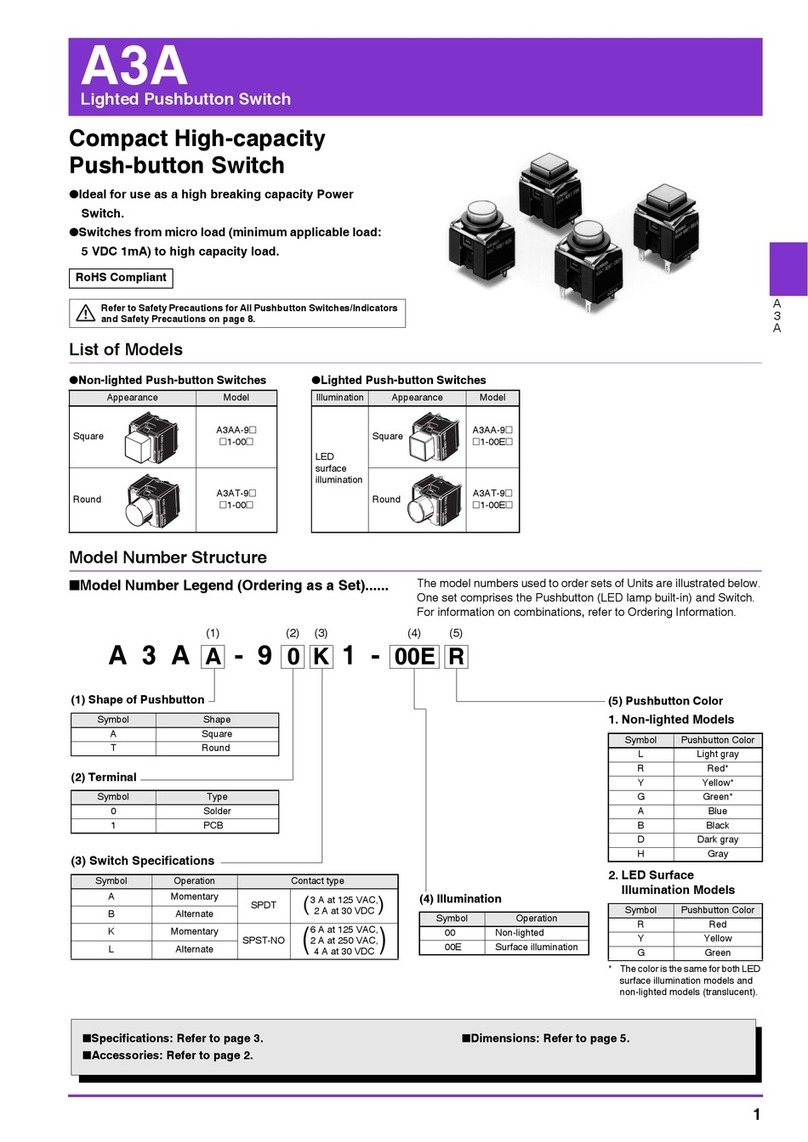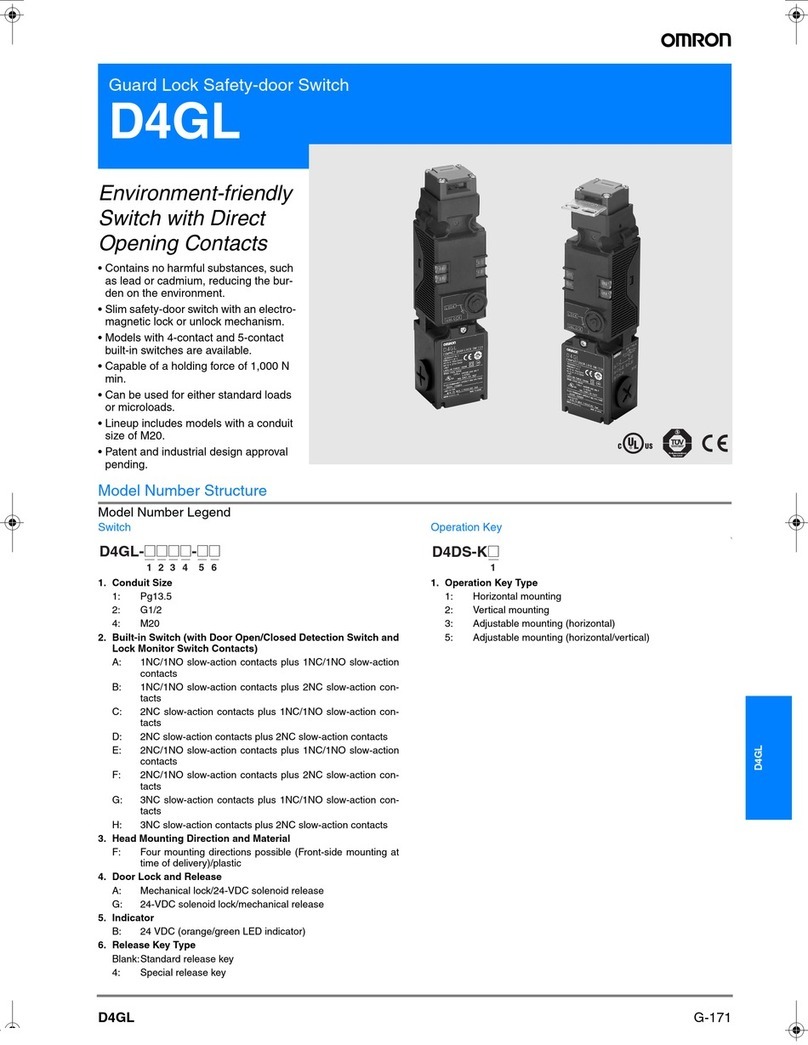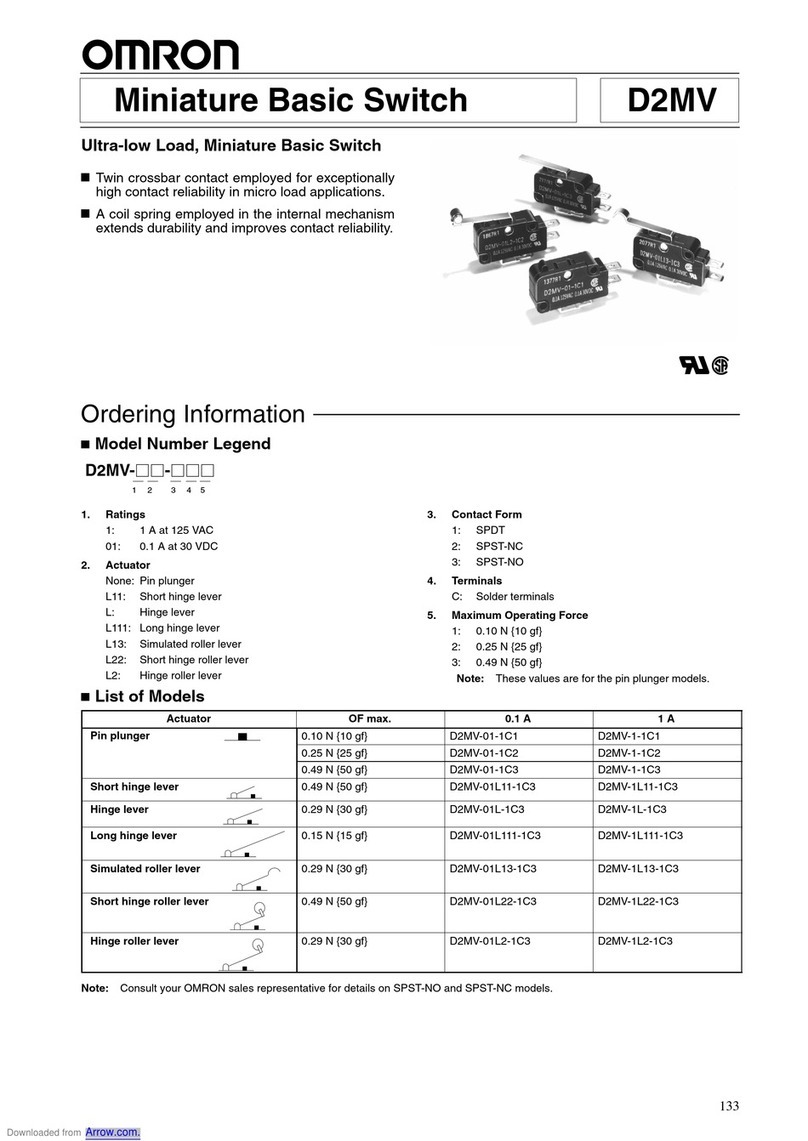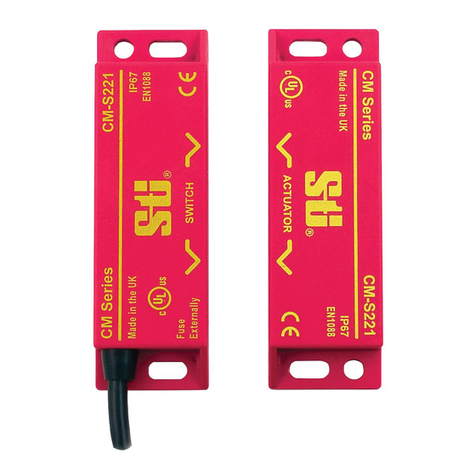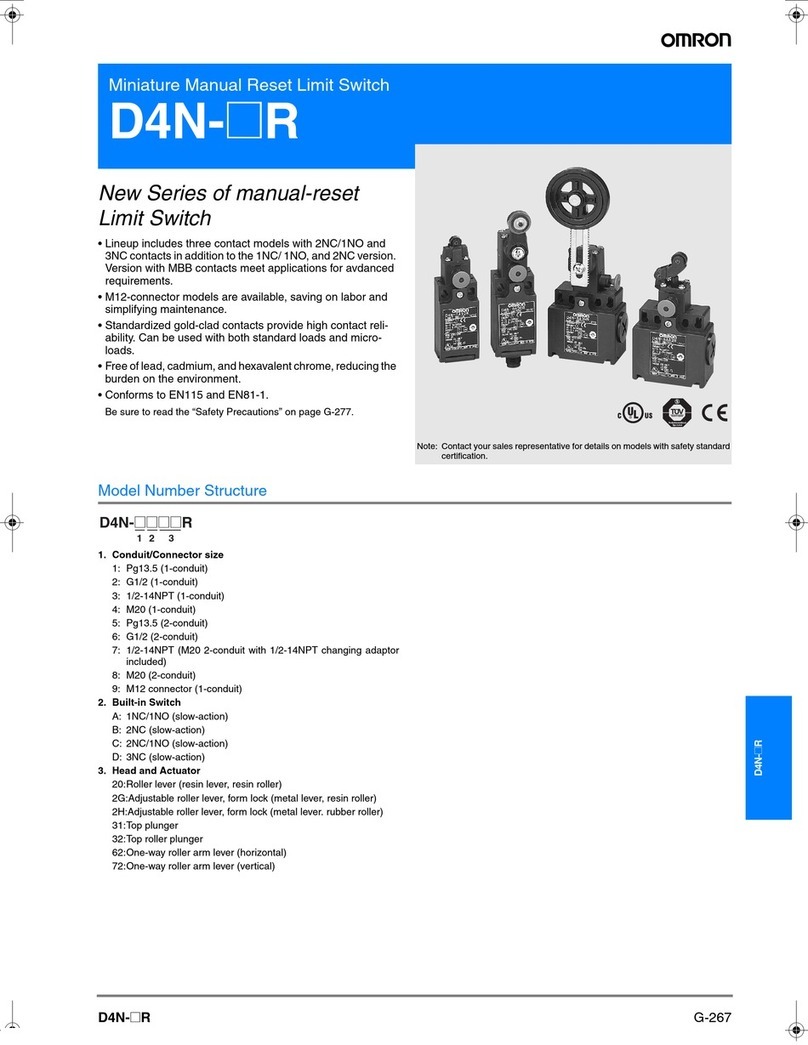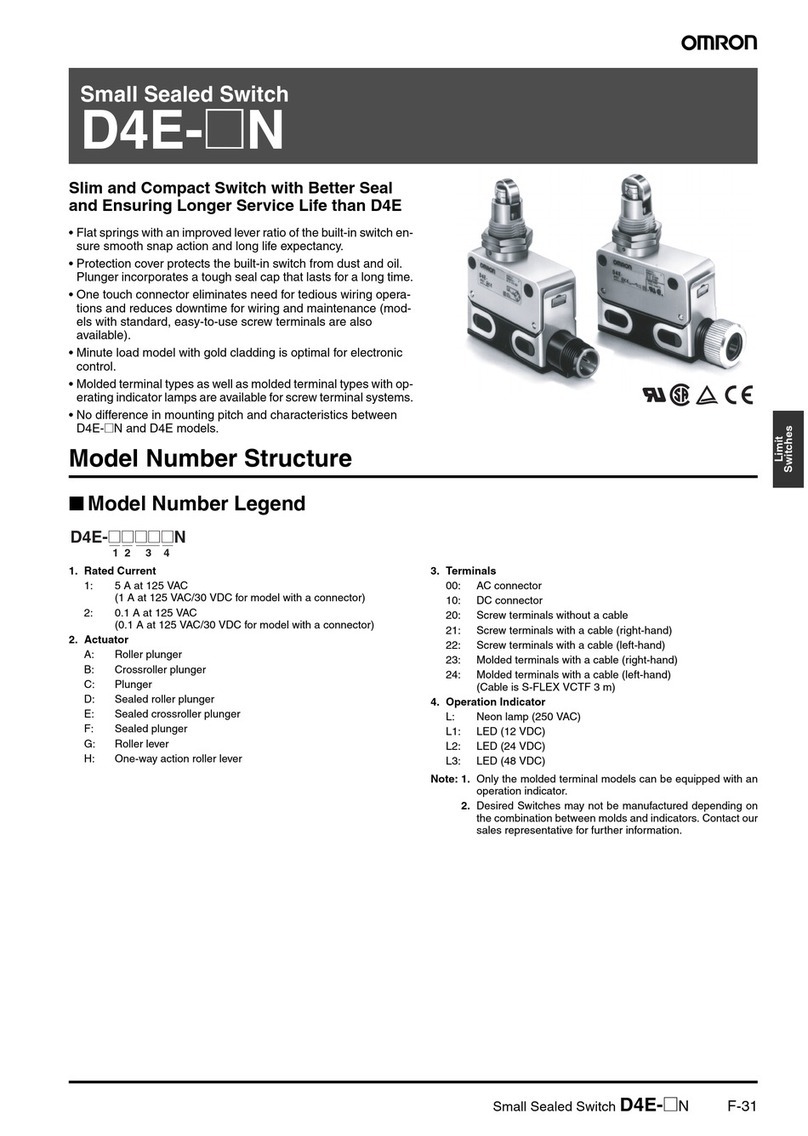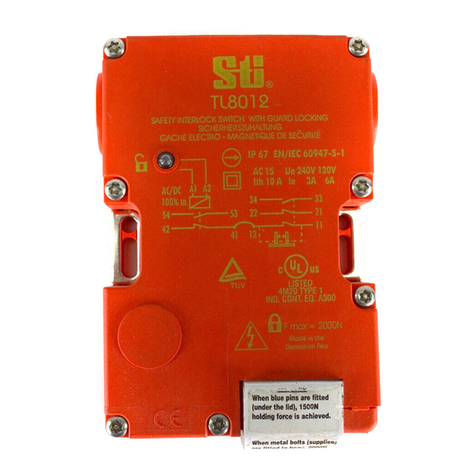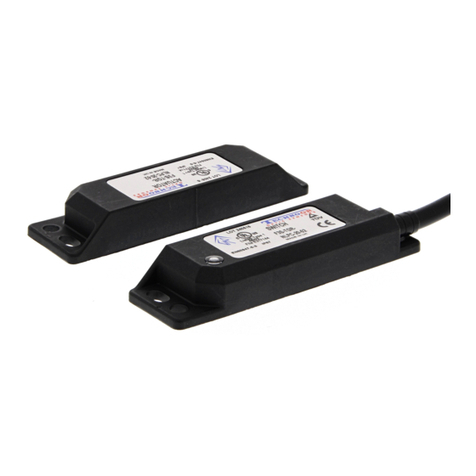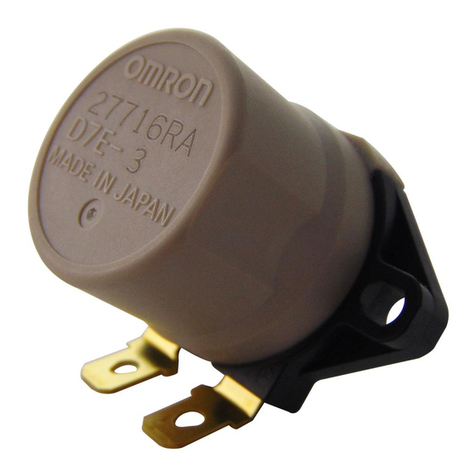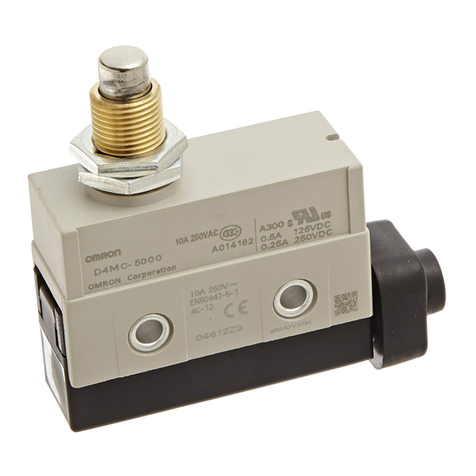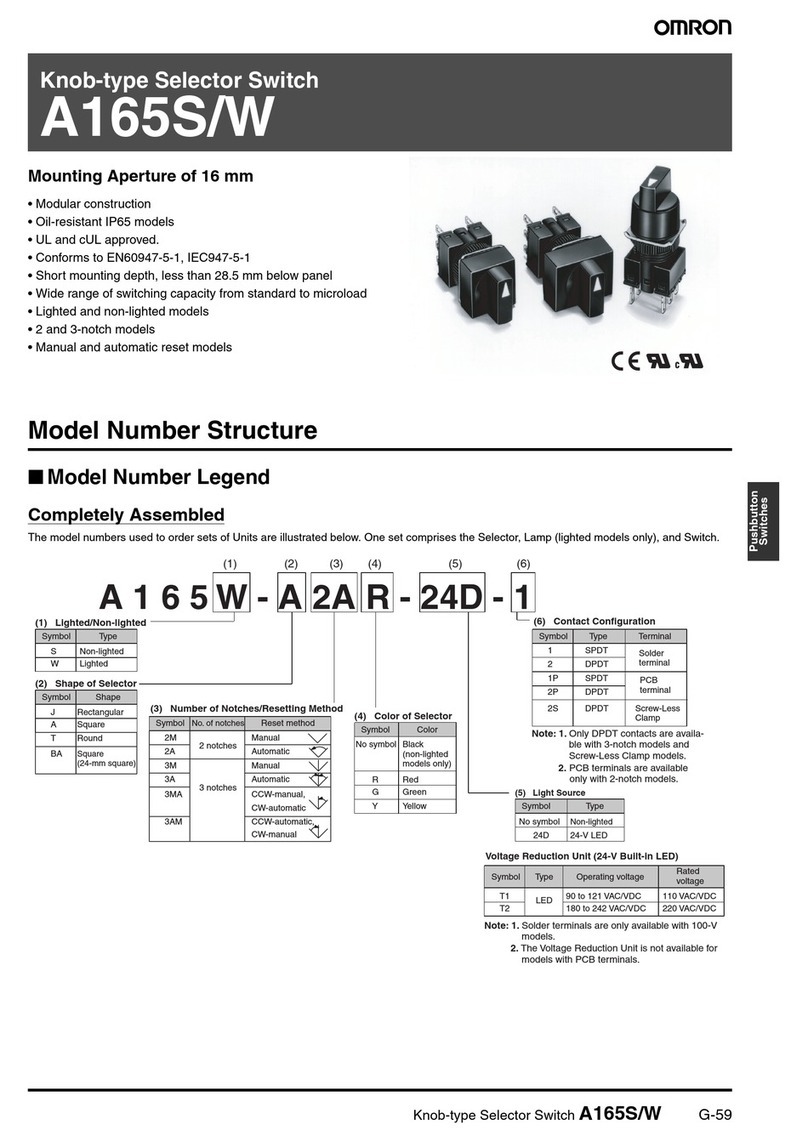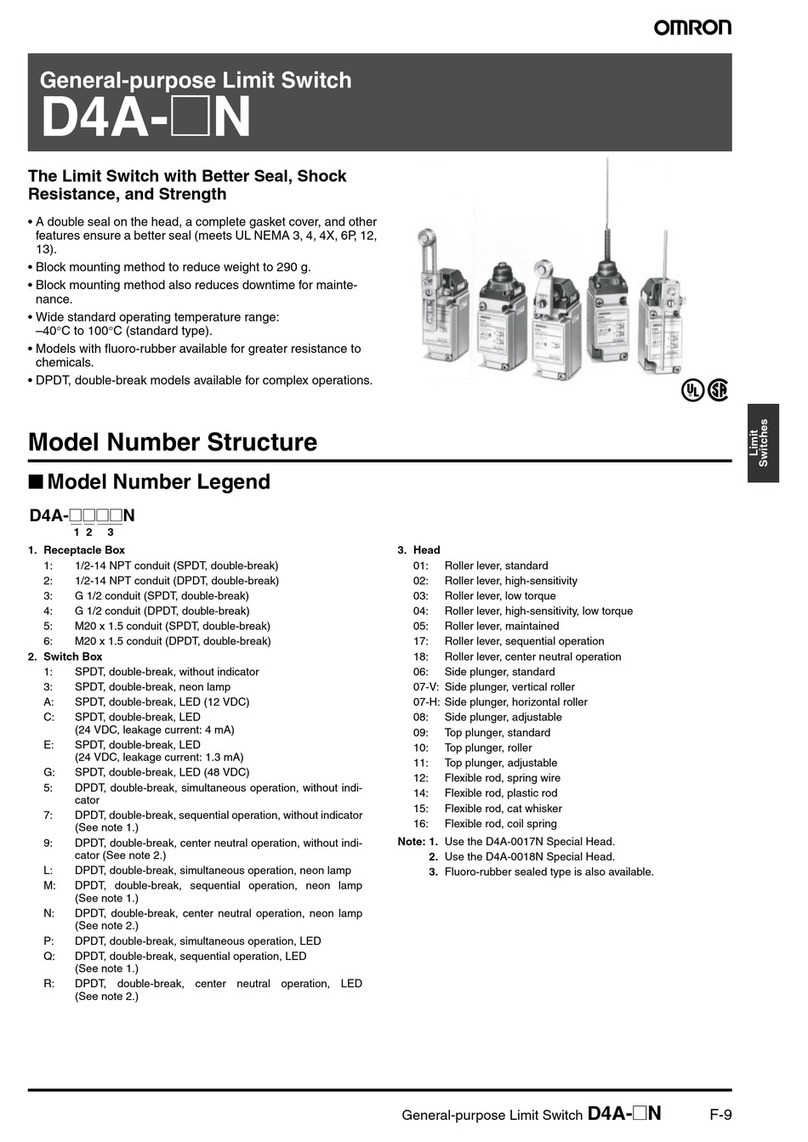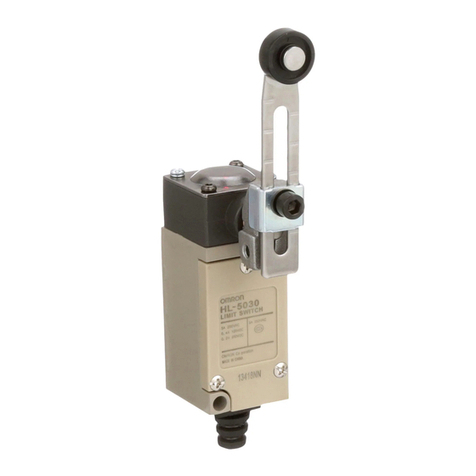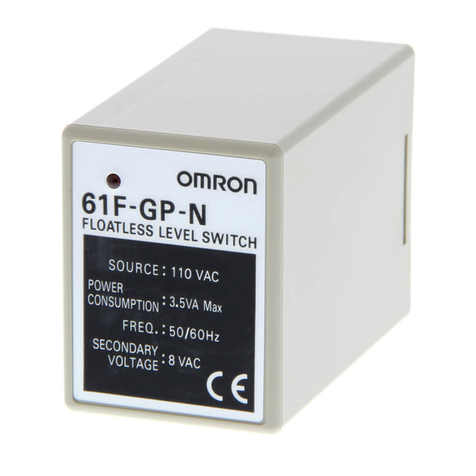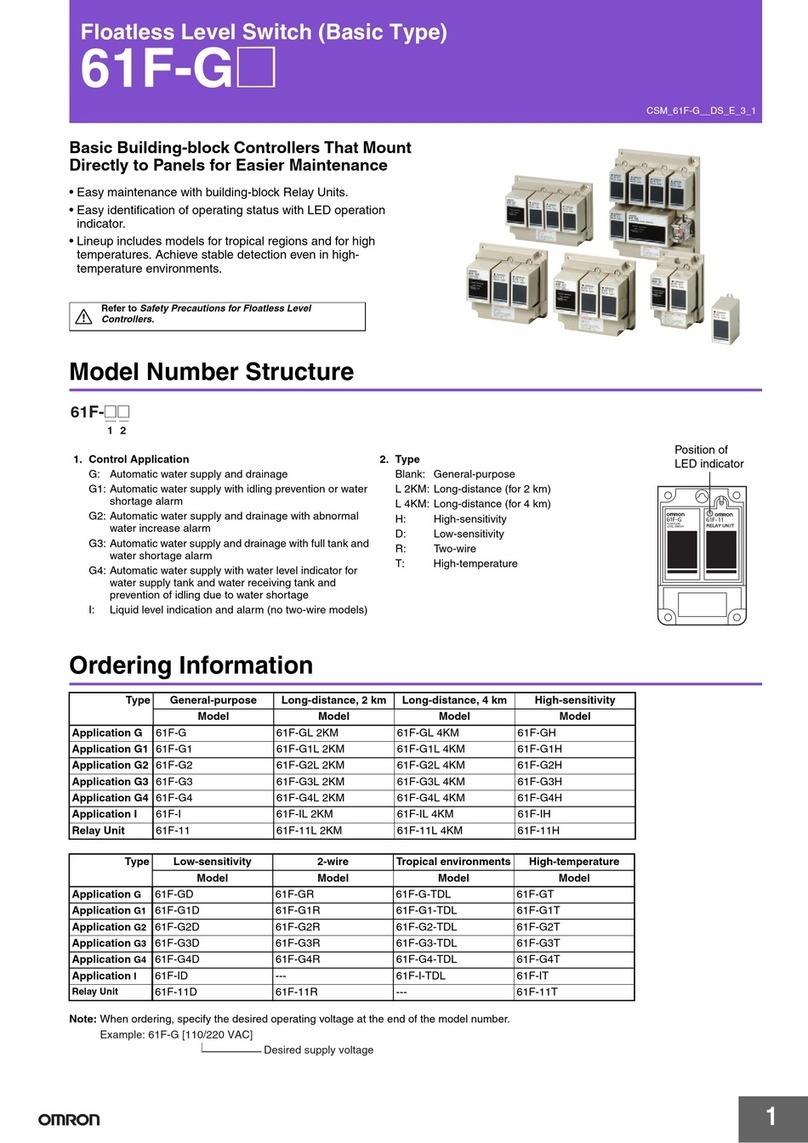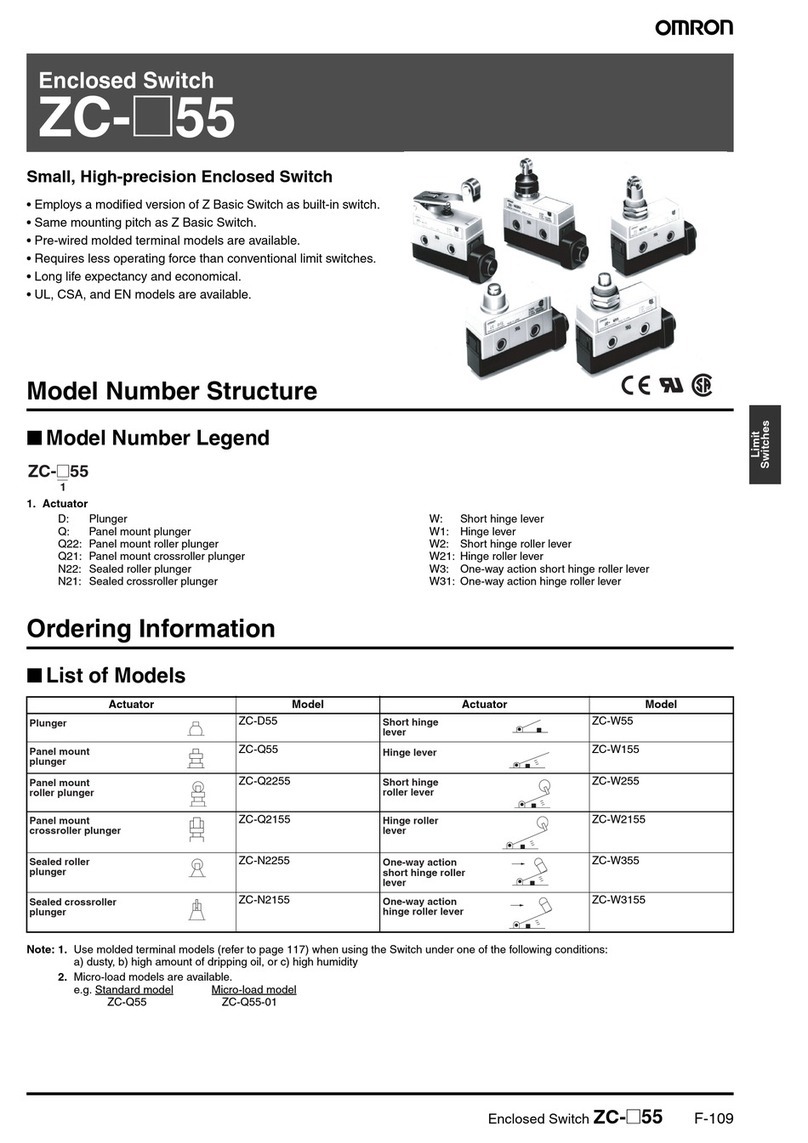
D4DS D4DS
9
Precautions
CAUTION
Do
not dismount the operation key from the door intentionally
and insert it to the switch with the door open. Machine may
start operating and injury or death may be caused.
Do not use metal connectors or conduits with this switch. Rigid
connectors and conduits may damage the switch. The broken
conduit hole may cause an electrical shock hazard.
Install
the operation key so that it will not hit the operator when the
door
is open.
If
the D4DS is to be used as a switch in an emergency stop circuit or
in a safety circuit for preventing accidents resulting in injuries or
deaths,
use NC contacts with a forced release mechanism and set
the
D4DS so that it will operate in positive opening mode. For safety
,
install the Switch and the Operation Key using one-way rotational
screws
or other similar means to prevent them from easily coming
off.
Protect the
D4DS with an appropriate cover and post a warning
sign
near the D4DS in order to ensure the safety of the door
.
To prevent the D4DS from damage due to circuit short-circuiting,
connect
a fuse with a breaking current 1.5 to 2 times larger than the
rated
current of the D4DS in series to the D4DS.
If
the D4DS is used under EN-approved conditions, use a gI or gG
10-A
fuse approved by IEC269.
Mounting
Be
sure to mount the D4DS with a stopper as shown
in the following
illustration. Do not use the casing of the D4DS as a stopper
. Be sure
to install the stopper so that the space “a” will be a maximum of
3 mm.
Stopper
Switch
Correct Use
Operating Environment
Do
not use the D4DS in the following environments, otherwise the
D4DS
may malfunction.
•
Locations subject to significant temperature fluctuations
•
Humid locations where there is a risk of condensation
•
Locations subject to significant vibrations
•Locations subject to metal chips, oils, and chemicals inside a
protective
door
Operation Key
Be sure to use a special Operation Key only. Do not operate the
D4DS
with anything other than the special Operation Key
, otherwise
the
D4DS may break or the safety
of the system may not be main
-
tained.
Do
not impose excessive force on the Operation
Key inserted into
the
D4DS or drop the D4DS with the Operation
Key inserted, other
-
wise
the Operation Key may deform or break.
Excessive
force
Drop
Secure the Operation Key with screws so that the Operation Key
cannot
be removed with ease.
Refer
to
Dimensions
for the mounting dimensions
of the Operation
Key
and properly mount and the Operation Key correctly so that the
position
and angle will be correct.
Make sure that the Operation Key can be inserted properly with a
tolerance
of
±
0.5 mm in the upward,
downward, left, or right direc
-
tion,
otherwise the D4DS may soon become damaged.
±1 min.
±1 min.
